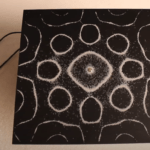How did life begin? Abiogenesis. Origin of life from nonliving matter.
How did life begin? Abiogenesis. Origin of life from nonliving matter.
Abiogenesis – origin of life. Living matter from non-living matter. The origin of living organisms from inorganic or non-living material is called abiogenesis. But abiogenesis is not evolution.
Despite the incredible variations of life we see today, at the fundamental level, all living things contain three elements: Nucleic acids, Proteins, and lipids. These three things had to have been present in order for life to start.
The most important component may have been lipids which make up the cell walls because without a way to encapsulate certain elements, they various chemicals could not come together to potentially interact.
Lipids molecules have a unique structure. The round part loves water. The tail part hates water. So it has a tendency to self-assemble into natural spheres. However, when there are certain salt ions present, it destroys the lipid spheres. But RNA and other functions of a cell require salts and other ions. However, researchers at the University of Washington showed that lipid spheres do not disassemble if they are in the presence of amino acids, precursor to protein molecules. So it turns out that lipid cell walls and proteins need each other to exist, in salty water.
Today, genetic information is stored in DNA. RNA is created from DNA. The simplicity of RNA compared to its cousin DNA, is the reason that most scientists think DNA came from RNA. This is part of the “RNA world » HYPOTHESIS, which theorizes that RNA was the essential precursor which led to the first living matter. But how did the first RNA molecule form from non-living chemicals? This is not clear cut, so here are some theories. RNA is made of three chemical components: the sugar ribose, the bases and phosphate. Figuring out how the bond between the bases and ribose first formed has been a difficult to replicate in the lab because cells in our body require complex enzymes to bring RNA building blocks together before they combine to form polymers. In a 2009 study, researchers at Rensselaer Polytechnic Institute showed that RNA could have formed on the surface of clays which act like catalysts to bring RNA bases together.
But how did proteins form? In the 1950s, several experiments by Stanley Miller and Harold Urey verified that the natural formation of amino acids, components of proteins, was possible under the atmospheric conditions of Primordial Earth. It turns out that it’s pretty easy to form many kinds of organic molecules, in a wide range of environments.
But having all the precursors get together inside a lipid cell wall does not necessarily mean that they will all come together to form a self-replicating living cell. This is not well understood.
There are creationist arguments such as, if I put all the parts of a watch in a big vat and keep stirring it, a functioning watch is not going to magically form inside the vat. And some cite an estimate by scientists Hoyle and Wickramasinghe showing that the probability of all the chemicals in a simple bacterium arising on their own by chance, is one in ten to the 40,000th power.
But these arguments are oversimplifications. They ignore the fact that sophisticated life forms like current day bacteria almost certainly did not arise spontaneously, but arose in much simpler incremental steps. The actual probability is not how the hundreds of complex chemicals can come together to form a modern day bacterium, but the probability of a few chemicals forming and coming together to form the precursors of life that can chemically evolve over time to form the simplest kind of life form that may have looked nothing like any evolved life form we see today.
But showing how even this chemical evolution could have happened is problematic. Scientists have had trouble figuring out what could have driven chemicals to evolve the complexity needed for biological functioning. But in 2014, Jeremy England, physics professor at MIT showed mathematically that the driving force for chemical evolution may be Entropy. The one thing that distinguishes living things from non-living things is its ability to capture energy and convert it to heat. England argues that when exposed to an external source of energy, such as the sun, any group of molecules will restructure themselves to dissipate more and more energy.
While there is no single generally accepted theory for the origin of life, all credible proposals show that life under natural conditions by a slow processes of chemical and molecular evolution could plausibly result in simple life forms over a long period of time. Do we have proof that this is how life came about – no. At least not yet. Is it plausible – absolutely.

